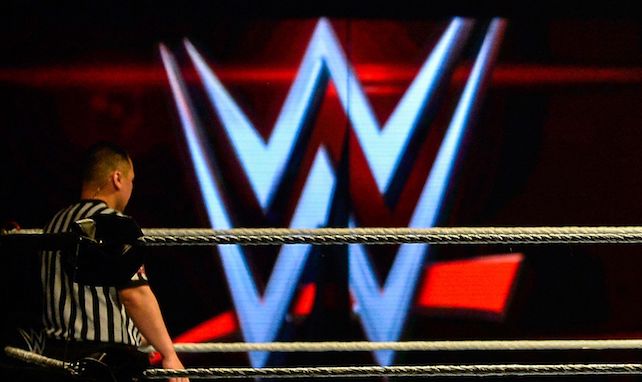It’s been over a year since Charlotte Flair let slip during our interview that WWE is considering a Women’s Tag Team title.
It was just a mention — “If they decide to go ahead with the tag titles,” she said — amidst conversation otherwise focusing on her then-new book, relationship with dad Ric Flair and growing legend in the squared circle. However, it was enough to spark my imagination and become a concept I’ve pondered consistently since.
Clearly I’m not alone. Speculation about a future tag division for WWE’s burgeoning roster of women has grown so prominent, it’s now standard discussion with female superstars. The company itself seems to incessantly tease the idea by heavily promoting pairing like Sasha Banks and Bayley, Tamina and Nia Jax and The Riott Squad.
Should such an announcement be made, audiences will be primed — and there’s never been a better moment in history to expand championship opportunities for women. WWE’s female roster finally has the depth, diversity and talent to support a second-tier of gold, surely allowing a modern Tag division to sidestep the pitfalls of its 1980s predecessor.
For the unfamiliar, a WWE (then WWF) Women’s tag team title is not a new concept. In the ‘80s, ladies made a resurgence via the famed “Rock ‘n Wrestling Connection,” which saw pop star Cyndi Lauper join Wendi Richter in her much-hyped feud with The Fabulous Moolah. Women gained sufficient popularity for WWF to soon introduce tag titles. (Interestingly, the first champs entered WWF with the NWA Women’s tag titles, which were quickly rebranded.)
Most prominently, The Jumping Bomb Angels and The Glamour Girls — former WWF Women’s champ Leilani Kai and then-wrestling staple Judy Martin — traded the belts for years. Unfortunately, the four also collectively comprised approximately two-thirds of all women in WWF at the time. There were periods with scarcely enough active wrestlers to challenge the Women’s champion, much less an extra few for that division, and the tag titles were short-lived.
Lana Talks WWE Evolution & Her Excitement For Women’s Tag Team Championships
The entire landscape of women’s wrestling has changed since that time, obviously, paving the way for a tag team reemergence. In the ‘80s, females were considered “special attractions” and novelties, with WWF keeping no more than a handful on call at any given time.
Clearly the shortage of contracted competitors which once plagued the women’s division is well behind WWE now. The rosters of its three brands — NXT included — have nearly a dozen active females each. With the annual Mae Young Classic, countless others are at its disposal. Undoubtedly, if all-women’s pay-per-views like “Evolution” are expected in the future — and given the quality of said event, they SHOULD — a tag title seems essential.
The smartest application of a Women’s tag division would see it split across brands. Tag team wrestling in general is something WWE focuses on only sporadically, and it stands to reason a women’s division would be treated similarly. However, creating a multi-branded championship would provide a strong catalyst for stories on each televised product, allowing angles to build across brands toward pay-per-view pay-off.
On RAW and Smackdown Live, teams vying for a coveted shot against the reigning champs could develop strong rivalries. As Smackdown showed this year — when it removed the tag titles from its hotly-contested Uso/New Day rivalry — teams simply competing to prove dominance and earn a future title opportunity can provide compelling, top-notch storytelling.
Rather than merely competing for a leg up, imagine the kinds of feuds which might evolve from teams like Sonya DeVille and Mandy Rose or The IIconics clamoring for a shot at the gold. How much more interesting would it be to see Tamina and Nia Jax dominate Raw’s women if a tag title opportunity was the end game? Wouldn’t the stakes for Bayley and Sasha remaining friends be even greater if they might be able to make history together?
Such scenarios would do more than layer in new motives for the tag matches we already see aplenty. Such a Division would also provide both a testing ground for new talent and outlet to reinvigorate over-exposed or under-utilized performers as well.
Tag teams offer a chance to slowly introduce competitors together, familiarizing them with audiences and grooming the strongest for solo stardom. This has long been the case for male partnerships; the women would be no different.
Under the current WWE model, many women come to the main roster to significant fanfare but falter in middle-of-the-road territory with nowhere to go. Unless they are a major challenge for the brand’s single’s title, they languish in seemingly meaningless angles or fall quickly to the wayside.
A tag team division would offer numerous performers without stories chances to shine, hone their characters and develop followings not unlike what we have seen countless times with some of the industry’s most legendary men. What would Shawn Michaels or Bret Hart have been without first cutting their teeth in The Rockers or Hart Foundation? Were members of The Shield not tag champions before becoming World champions individually?
Equally important, the division might offer new life to established acts — those once focal points of the women’s movement who have since taken lesser roles. Bayley and Sasha, obviously, are prime examples, as are veterans like Alicia Fox, Mickie James, The Bellas and Naomi. All are former champions, but none are poised to regain that central spot in the foreseeable future.
Any could benefit from a tag division as surely as Cesaro and Sheamus have. A multiple-time World champion, Sheamus is nowhere near the main event at the moment but continues to be an impressive and valued member of the roster overall with The Bar.
As rumors now swirl about the prospect of WWE adding a “Queen of the Ring” tournament, today’s women are a staple on every show, with multiple matches among them airing each week on WWE television. They’ve worked hard to earn equity with male counterparts, celebrate their own PPV and compete in popular gimmick encounters like Hell in a Cell, Iron Man and the upcoming TLC match. They carve new places in history almost faster than audiences can keep up.
When acknowledging exactly how far the “Women’s Evolution” has come these last few years, it’s almost laughable to realize their ‘80s predecessors had title opportunities they do NOT enjoy now. Rather than “novelties,” these women are widely considered among the finest athletes competing today, certainly on-par with and often exceeding the men.
It’s time their title opportunities reflect as much.








